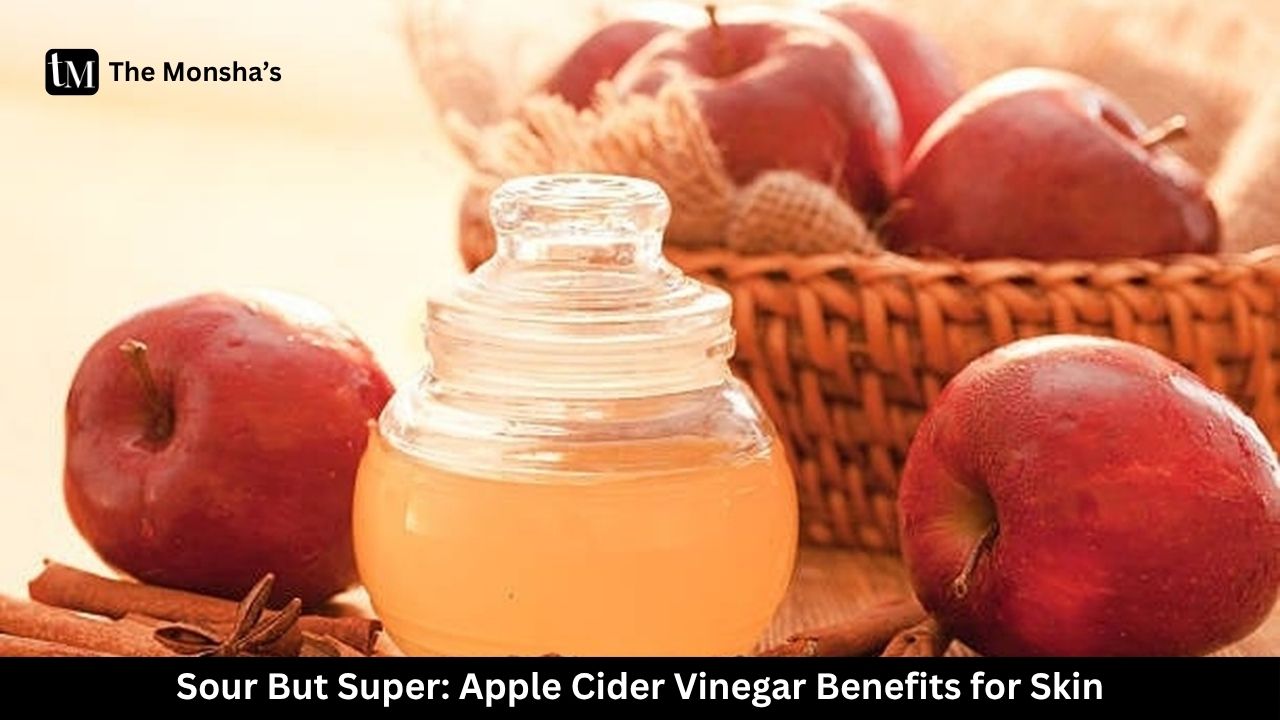
"Face pe salad dressing ya skin tonic? ACV ke naam pe sab kuch chal raha hai! Thoda khatta hai par glow wala meetha bhi de sakta hai."Honestly, I’ve seen people dousing their skin in straight-up apple cider vinegar like it’s micellar water, and then wondering why they’re redder than a Himachali apple. As Kishore Kumar might’ve sung if he wrote beauty blogs: “Lag jaa skin ke saayein, ACV se glow ban jaaye…” 😅
Let’s cut the hype and spill the tea — or rather, the vinegar — on what ACV actually does for your skin, the benefits backed by science, and how to use it safely without turning your face into a pickle jar.

Short version: dilute, patch test, go slow, moisturise and always use SPF after acids.
Apple Cider Vinegar is fermented apple juice containing acetic acid, malic acid, trace minerals and antioxidants. Its low pH and organic acids are what make it interesting for skin. In lab tests, vinegar shows antibacterial and mild exfoliating properties — but raw, undiluted ACV can be harsh on skin. So think of it as a spice: the right pinch makes magic; too much ruins the dish.
ACV’s natural acids can gently loosen dead cells, helping skin look brighter. Dermatology texts mention vinegar as a low-grade chemical exfoliant for superficial skin build-up — but only when diluted.
In lab conditions, ACV has shown to inhibit the growth of certain bacteria and fungi. This can help reduce breakouts as a supportive step, especially in oily/acne-prone skin.
Healthy skin is slightly acidic. Harsh cleansers raise pH; diluted ACV can help restore it, supporting the barrier. This is why some people use ACV as a toner or rinse.
Mild acids like malic acid may gradually help fade post-acne marks or uneven tone. But the effect is subtle and slow — think of it as a helper, not a bleach.
Very dilute vinegar solutions have historically been used to cleanse minor wounds. On intact skin, it may help calm mild irritation and support recovery when used correctly.
The mantra: Dilute, Patch Test, Go Slow.
Start with 1 part ACV to 4–5 parts water. If sensitive, go weaker.
Apply diluted mix on jawline or behind ear for 10 mins, rinse, wait 24 hours. Proceed only if no redness or itching.
Begin with 1–2 times per week. Never daily at first.
Avoid using ACV with strong acids, retinoids, or immediately after scrubs. Moisturise afterwards.


No. Start 1–2 times per week, see how your skin reacts.
It may help fade post-acne marks gradually but results vary.
Not recommended. It’s too acidic — rinse after a few minutes.
Raw, unfiltered ACV (“with the mother”) from a reputable brand.
Usually no. Test cautiously or skip entirely.
Apple Cider Vinegar is a humble, affordable, effective sidekick — but like every “desi nuskha,” its magic is in the method. Dilute it, patch test it, and slot it into your routine with care. Otherwise you’ll end up with a face redder than a Shimla apple 🍎.
So go ahead, try the mild toner recipe and tell me — did your skin feel calmer or confused? And remember:
“Thoda khatta, thoda meetha — par skin ho sweet glow wala!” 😌💁♀️